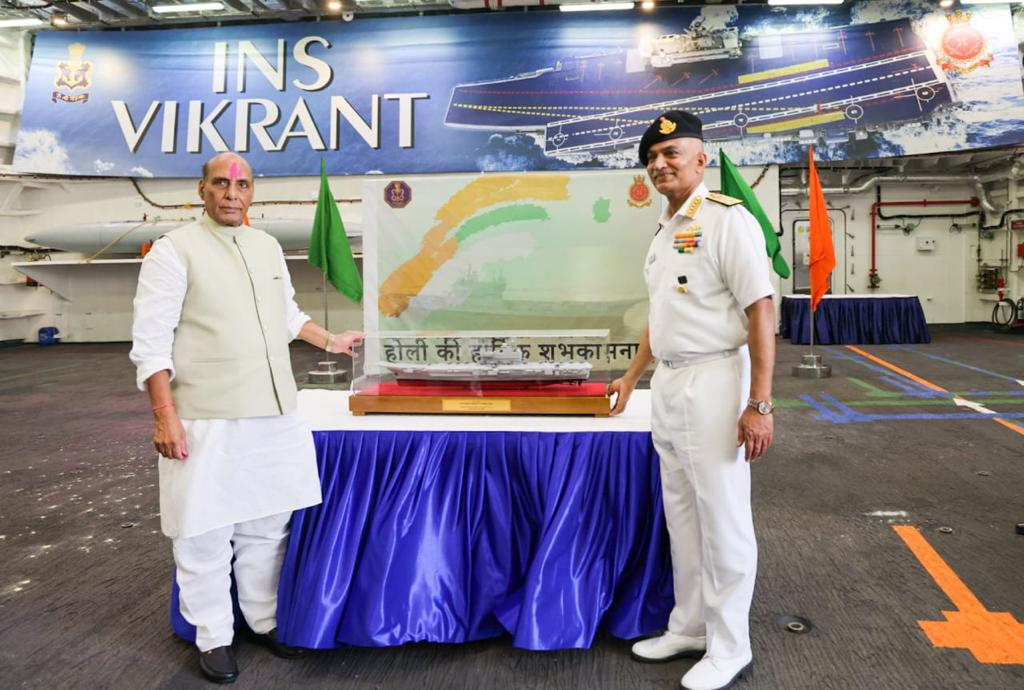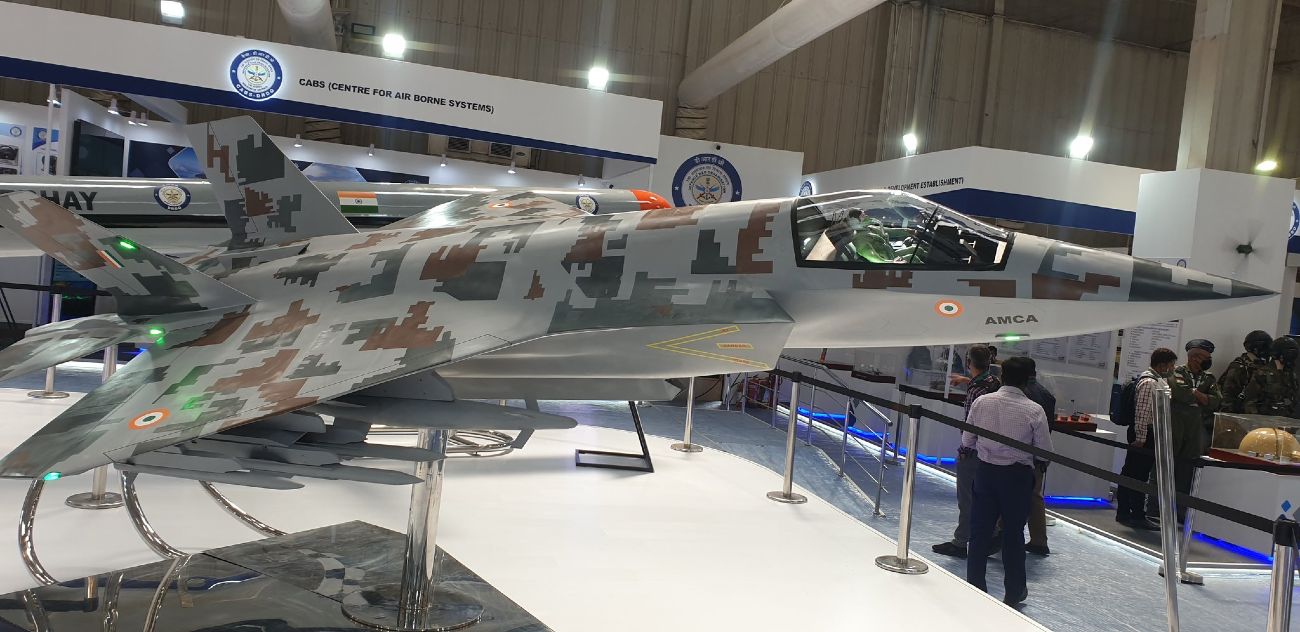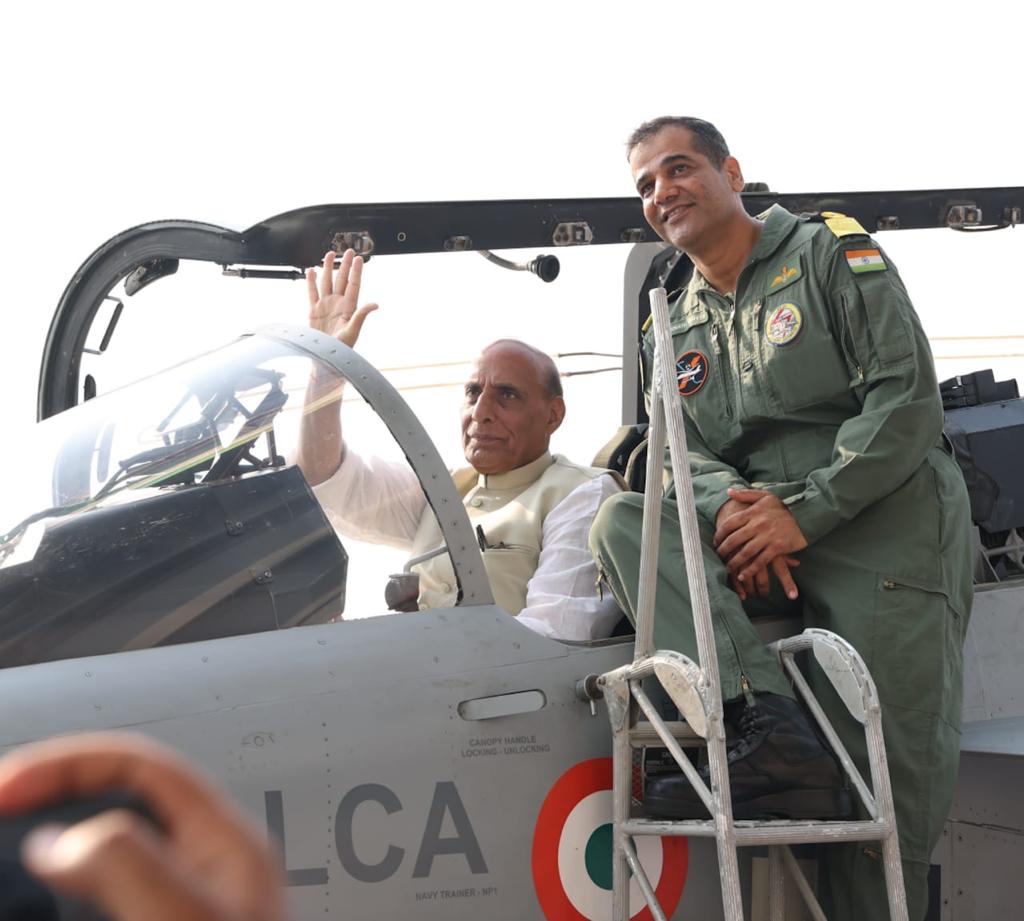The Indian Defense Minister Rajnath Singh recently said that orders worth over $100 billion would be placed through the local defense sector in the next 5-10 years.
The defense minister made these remarks during the Naval Commanders’ Conference on March 6, held aboard India’s first Indigenous Aircraft Carrier, INS Vikrant.
In his address to the Commanders, Singh highlighted that economic prosperity and security are closely related while pointing out that the defense sector has emerged as a significant demand creator, bolstering the economy and ensuring the country’s development.
“In the next 5-10 years, orders worth over $100 billion are expected to be placed through the defense sector, and it will become a major partner in the country’s economic development,” said Singh.
“Today, our defense sector is on the runway. Soon, when it takes off, it will transform the country’s economy. If we want to see India among the world’s top economic powers by the end of ‘Amrit Kaal,’ we must take bold steps towards becoming a defense superpower,” Singh asserted.

While Singh did not specify what types of weapon systems or products will be acquired through these “orders worth over $100 billion”, the Modi government has been issuing ‘Negative Lists’ of defense equipment banning their imports and encouraging indigenization of their production.
India’s Defense Indigenization Plans
Four such lists were released in August 2020, May 2021, April 2022, and October 2022 to impose a phased import ban on weapons intended for indigenization over the next five to six years.
These four lists encompass 411 types of weapons and platforms, comprising thousands of weapon sub-systems and components in fighter planes, aircraft, helicopters, submarines, tanks, infantry combat vehicles, electronic warfare systems, missiles, smart ammunition, rockets, and bombs.
Of these, around 2,700 items have reportedly been indigenized as of August 2022, while the remaining are slated to be manufactured in India in phases between December 2022 and December 2028, as per the data from the Indian Ministry of Defense (MoD).
Reports suggest that the items listed on the third list will be the most challenging to manufacture for the domestic defense industry because it comprises complex primary weapons and equipment such as lightweight tanks, naval utility helicopters, missiles, and artillery gun systems.
On its end, the Modi government has consecutively increased the share of domestic procurement in the Indian military’s capital acquisition budget over the last three years.
In 2020-21, the allocation for the local defense was 54 percent of the total procurement (₹51,000 crores), which was followed by 64 percent (₹70,221 crores) in 2021-22, and 68 percent (₹84,598 crores) in 2022-23.
In this year’s budget, the Modi government significantly increased this trend by allocating 75 percent (approx. ₹1,00,000 crore) of the defense capital procurement budget for domestic industry.
The Indian government has, since 2020, earmarked more than ₹3,00,000 crores for the local defense industry. The government has accorded Acceptance of Necessity (AoN) to 163 proposals worth ₹2,46,989.38 crores under various categories of Capital procurement.
Going by Rajnath Singh’s recent announcement of more than US $100 billion (₹8,20,605 crores) worth of orders for the local defense industry in 5-10 years, the Indian government could be expected to increase the share of the defense capital procurement budget for the domestic sector by around 14,000-20,000 crores per year.
EurAsian Times asked Indian aerospace analyst Girish Linganna about the general focus of the Indian government to gauge what weapon systems or platforms could be acquired through planned US $100 billion (₹8,20,605 crores) worth of orders for the local defense industry in 5-10 years.
“The current trend shows that the government prioritizes aircraft, UAVs, Tanks, Troop carriers, sub-systems, munitions, long, medium, and short-range missiles, and artillery. Submarines and ships may also make it to the list in the period,” Linganna said.
Linganna said that the aircraft could include Tejas Variants, Twin Engine Deck Based Fighter (TEDBF), Advanced Medium Combat Aircraft (AMCA), transport aircraft like Dornier and TATA Airbus C295, and trainers.

As for the Unmanned Aerial Vehicles (UAVs), he explained that they are an emerging category with shorter development times and faster deployments.
Speaking about munitions, Linganna said that these could include beyond-visual-range missiles, anti-radiation missiles, anti-tank, anti-drone systems, guided bombs, and anti-airfield weapons. At the same time, he added that drone-specific munitions should be included even though we do not see them as a separate category.
With the short and medium-range missiles, we can see the induction of more Brahmos and Pralay. Strategic missile procurement is outside the domain, but India is bound to increase their numbers given Chinese expansion, Linganna noted.
Rajnath Singh also hinted at a ‘fifth positive indigenization list’ during the five-day Aero India-2023 airshow held last month at Yelahanka Air Force Station in Bengaluru.
“I cannot rule out the possibility of a new positive indigenization list (coming out soon), given India’s focus on self-reliance in the defense manufacturing sector,” Singh said.
Furthermore, Singh also said India is trying to completely indigenize the 4.5 generation Tejas Light Combat Aircraft (LCA) developed and produced by Hindustan Aeronautics Limited (HAL).
“We are putting in all efforts to see that Tejas becomes 100 percent indigenized. That is our ultimate aim,” Singh said while addressing the curtain raiser of Aero India 2023.
100 Percent Indigenization Of Tejas LCA
General Electric’s F414 engines power India’s homegrown Tejas LCA. The US multinational conglomerate plans to produce these engines in India, which could jeopardize the Indian government’s long overdue plan to convert Tejas into a fully indigenized product.
The problem is that developing an aero-engine technology for military applications requires deep expertise across various disciplines such as combustion, fluid dynamics, materials, and control theory applied, tested, and repeated continuously over the years.
The knowledge of the underlying technologies is not available in textbooks but is a closely guarded property of a handful of corporations like General Electric.

Furthermore, while India aspires to become part of the club of a few global aviation majors who have mastered aero-engine technology, it does not even possess a fully functional wind tunnel facility that is essential to study the aerodynamic characteristics of its designs.
Once designed and assembled, engines need extensive testing in wind tunnels and subsequently on flying testbeds for hundreds and thousands of hours to understand each part’s fatigue characteristics and degradation.
Such a facility can simulate and test an engine designed to work at 40,000 to 50,000 feet above the ground and will give designers the freedom to scale up or down and test and validate hundreds of components.
When asked about the government’s long overdue plan to increase the indigenous content of the LCA Tejas, Singh said: “That work is on, don’t worry about that. Just give us some more time. We are at it.”
When asked about the 100 percent indigenization of Tejas LCA, Linganna explained that the Indian government’s indigenization means producing all systems in India, including foreign companies manufacturing their products in India.
“In the case of GE manufacturing its engines in India, the benefits will be local employment and local sourcing in as many components as possible,” Linganna said while noting that the volume of engines required for the LCA Tejas program is about 200, and it makes sense for GE to assemble them locally.
Overall, Lingann believes that the aim to indigenize LCA up to 100 percent is a long way to go as engine, ejection systems, refueling systems, and some line replaceable units are still being imported.
“It may not be economically feasible, but India can secure the availability of critical equipment from future stocks. It will be up to the private players to co-produce subassemblies with the GE suppliers,” Lingann further said.
- Contact the author at tanmaykadam700@gmail.com
- Follow EurAsian Times on Google News




